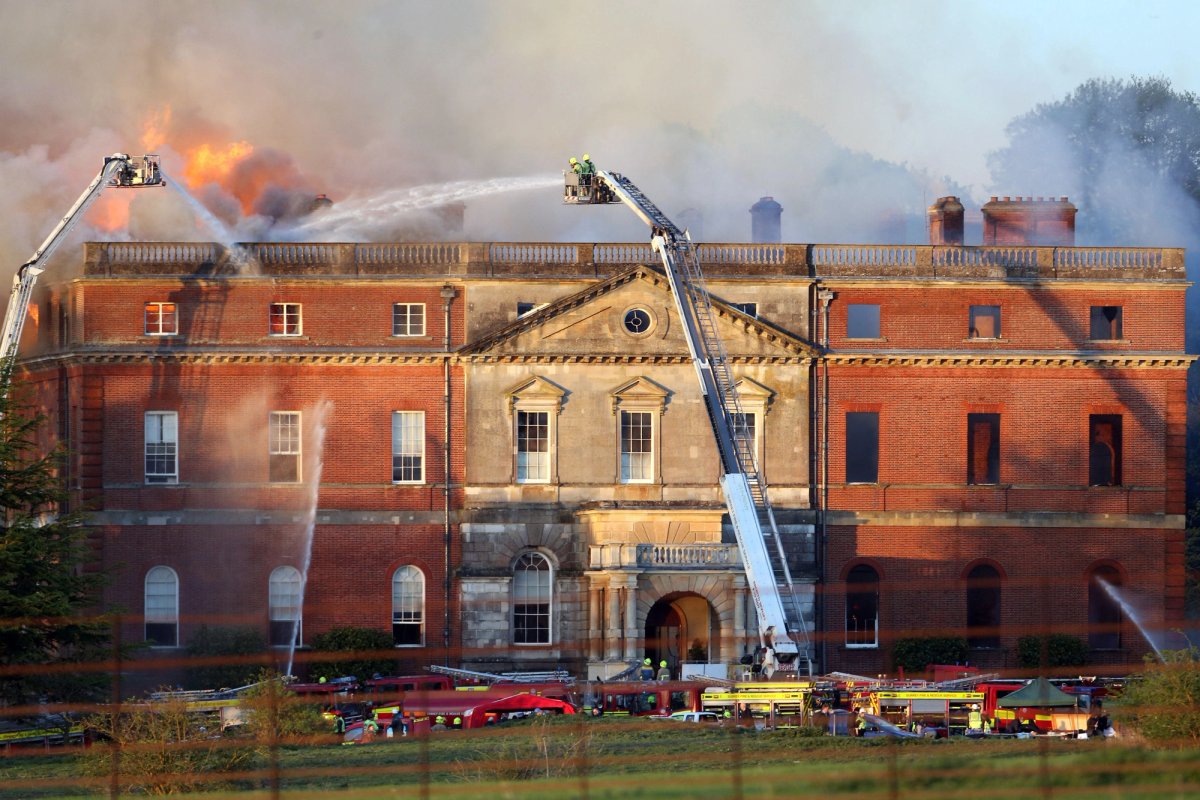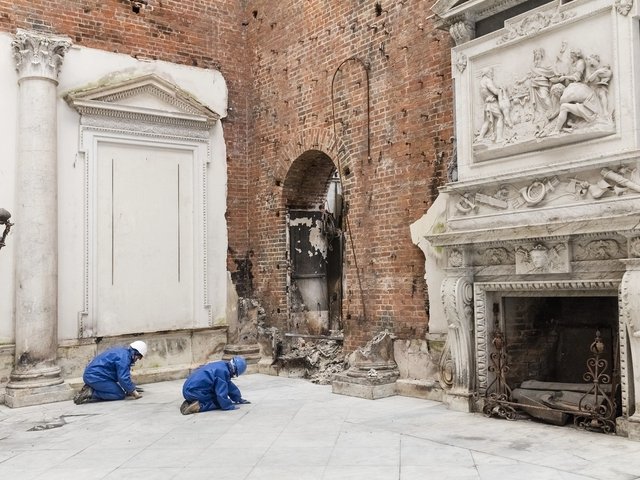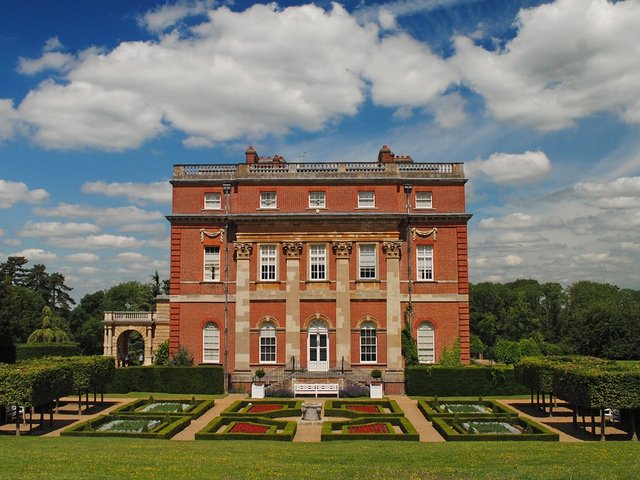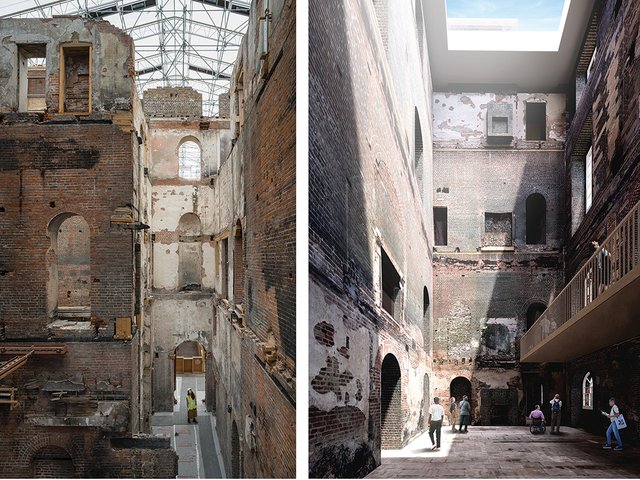The UK’s National Trust has pushed back against the notion that its properties are not “sufficiently” insured against disaster, following claims put forward by the Restore Trust pressure group ahead of the conservation charity's annual general meeting (AGM) this Saturday (8 November).
Restore Trust, which has received public support from right-wing figures such as Reform UK party leader Nigel Farage and media outlets including the Daily Mail, has been seeking to fight back against a perceived “wokeness” at the trust since 2021. The issues it has focused on have ranged from the organisation’s approach to addressing links between its buildings and histories of slavery to voting practices at AGMs—and the introduction of vegan scones.
One particular point of contention has been the trust’s handling of Clandon Park, an 18th-century palladian mansion in Surrey which was gutted by fire in 2015. The trust has since decided to maintain it as a preserved ruin: a decision that has sparked outrage from Restore Trust, and that appears to have played into the group’s 2025 resolution.
The resolution states: “We propose that all historic buildings in the care of the National Trust should be sufficiently insured to provide enough funds for any eventuality, whether this is done on a ‘total reinstatement’ or ‘first loss’ [partial reimbursement] basis,” with the rest covered by reserves.
Asked by The Art Newspaper why the proposal is being put forward now, Cornelia van der Poll, Restore Trust’s chair, points to “catastrophic fires at National Trust properties in 2015 [at Clandon] and in 1989 [at Uppark in West Sussex]”, as well as “significant water ingress at Sizergh Castle” this year.
She adds: “The inept handling of the situation at Clandon Park has shown the members that the management of the National Trust does not have the confidence to deal with such a loss on behalf of the nation. The payment of £66.4m received for Clandon is far short of the £115m rebuilding cost claimed by the National Trust in a court case, which suggests that at least part of the reason for the fiasco is under-insurance.”
In an email to The Art Newspaper, a spokesperson for the National Trust said that its insurance arrangements are confidential. They referred, however, to an official response in the AGM booklet, which said: “Insurance... plays a vital role in our overall risk management strategy, and we maintain appropriate and robust cover, including for catastrophic events such as fire or flood.
“The trust works closely with specialist brokers to secure comprehensive cover, but no policy can provide absolute protection. The aspiration to insure against ‘any eventuality’, whilst understandable, is not practically achievable as insurance markets operate within defined parameters, and policies typically have exclusions for certain risks.”
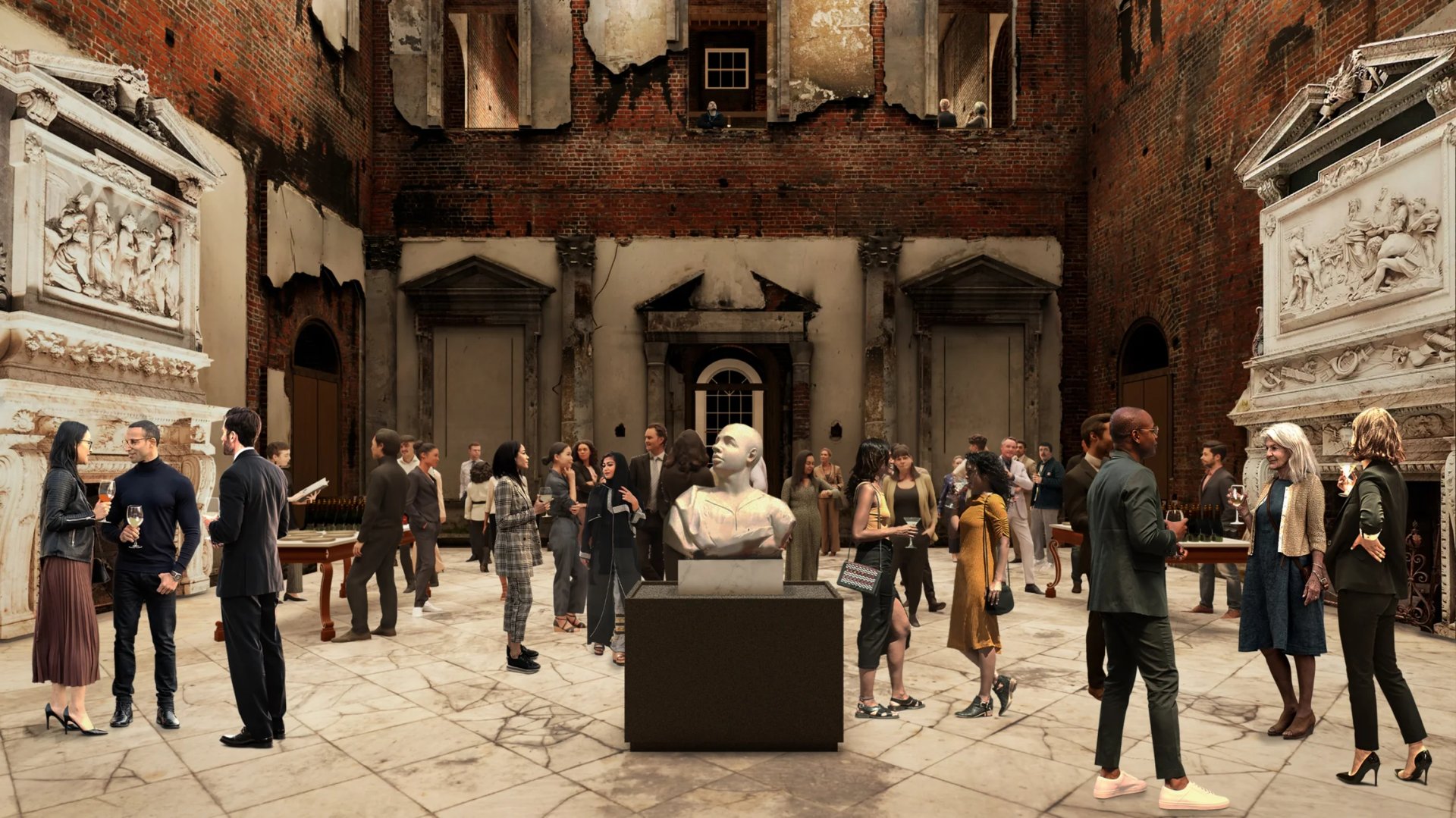
Architect’s impression of an evening community event in the Marble Hall at Clandon Park, Surrey © National Trust Images / Allies and Morrison
Adam Prideaux, the managing director of Hallett Independent Insurance, which specialises in art and heritage, has a deep love for the trust—his father Julian having overseen the restoration of Uppark. He explains that while he cannot comment on the trust’s specific policies, he feels it is ”completely untenable” to protect everything at its full rebuild value.
“Insurance is not a catch-all, it is just one aspect of your risk management,” he says. “And while I am dismayed about [the plans for] Clandon, if you look at it as a whole, the trust’s risk management—which could involve fire suppression system, disaster plans—has been outstanding. These disasters are now incredibly rare.”
He does, however, point to a broader “crisis“ in the field of historic properties insurance. “Firstly, there is almost no competition: there are very few insurers who have the skill or expertise to insure listed properties,” he says. Increased rebuild values in recent years have, he adds, driven premiums up, leading to “huge resentment and pushback”.
The realities of climate change have made things worse. “It has had a staggering impact on buildings insurance. There’s increased flooding, surface water, the very hot summers, subsidence—this is on historic properties, which are already quite vulnerable.”
Full disclosure
Another aspect of Restore Trust’s resolution is a call for the trust to disclose its annual report of insurance arrangements and levels of cover to members. Van der Poll claims this would be a way of “enabling scrutiny and rebuilding the trust of members”.
The National Trust, however, says this proposal raises “serious concerns”. “Insurers operate in a competitive market,” the spokesperson says, “and some of the information shared with them is commercially sensitive. We would also have significant security concerns about sharing policies which contain sensitive details.”
Fresh candidates
National Trust members will vote on the resolution at Saturday’s AGM. The event will also involve elections to the National Trust council. Restore Trust has put forward candidates every year since its founding, though only finding success in 2021.
This time, the group’s nominees include Alka Sehgal Cuthbert, an academic and writer who has alleged that UK educators are “indoctrinating” pupils with their approach to promoting diversity; and the historian Bijan Omrani, whose previous articles include one headlined “Without Christianity, there is no English identity”.
Restore Trust has come under scrutiny in the past over its opaque funding structure and its alleged connection to London’s 55 Tufton Street, the home of several right-wing media and lobby groups. Neil Record, one of the original directors of Restore Trust, is a backer of the Global Warming Policy Foundation and the chair of Net Zero Watch, two climate-sceptic groups which operate out of the building. Companies House filings show he resigned as a director of Restore Trust last year. He was contacted for comment.
Restore Trust describes itself as a grassroots organisation of National Trust members. Asked about the organisation's funding, Van der Poll says: “We have never received any funds from any organisation, whether at 55 Tufton Street or anywhere else. All our donations come from individuals.
“As there are thousands of these donors, we don't know what other campaigns they may take an interest in, but we can say that no organisation or group has ever attempted to influence the issues we campaign on. People who don't like what we are saying imagine that we are being controlled by other sinister interests, but the simple truth is that we are completely independent and we campaign on issues such as Clandon Park because we care about them.”


